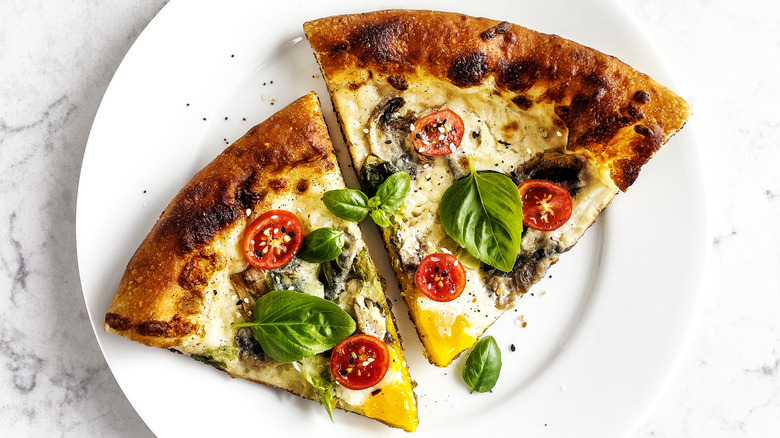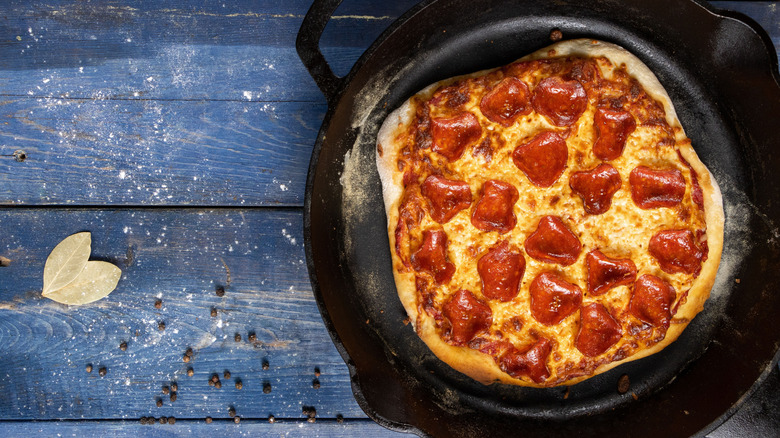Here's How To Enjoy Homemade Pizza Night Without Turning On The Oven
A classic wood-fired pizza is cooked in an oven that can reach up to 1,000 degrees Fahrenheit, which is something few cooks can duplicate at home. (Nor would we want to try, since it sounds both uncomfortable and dangerous.) That being said, though, there are alternative ways to cook pizza that don't use the oven at all, as acknowledged by our go-to pizza expert Nicole Bean. Bean, who belongs to the family that operates Houston's Pizaro's Pizza Napoletana, notes that pizza can be cooked on the grill, and also says there's a deep-fried variety called montanara pizza. (With the latter, however, only the dough is fried, and the toppings still need to be heated in the oven.) Yet another variety she mentions is pizza cooked on the stovetop.
Frying pan pizza might not be quite the same as the oven-cooked kind, to be sure. Even though a pan on the top of the stove can get hotter than the internal temperature of most home ovens, Bean observes, "I've not seen many make a Napoletana style pizza well on a stove." For one thing, the heat doesn't transfer the same way, so you don't want the burner cranked up as high as it can go or the bottom of your skillet pizza might burn. What's more, in Bean's opinion, cooking over super-high heat is "generally not a safe way to make pizzas in the kitchen." If you take some precautions, though, frying pan pizza can be a tasty alternative to the oven-cooked kind.
How to cook frying pizza
Nicole Bean says that for frying pan pizza, "Using the largest flattest pan you can find is best." While not all skillet pizza recipes call for oiling the bottom, some do, and Bean herself advocates "essentially frying the bottom" with a few teaspoons of oil. (Bacon grease would also be tasty on pizza crust.) You then need to heat the pan to medium-high and cook the crust on both sides before adding the toppings. (Here's a recipe for DIY pizza dough if you're thinking of making your own.) If you have a gas stove, you can take the cooked crust and char the edges directly in the flames.
Once the crust is cooked, turn it over so the first-cooked side is facing down again and lower the heat to medium. A lid on the pan will help melt the cheese. Spread the pizza with sauce and sprinkle it with cheese, then add any toppings you like. Go easy, though, since Bean says "Less toppings, the better" for this type of pizza. Other pizza professionals advocate rules for minimizing toppings, too, since overloaded pizza tends to fall apart pretty rapidly. Bean also notes that raw vegetables will release water as they cook, potentially making for soggy pizza. If you want a meat-free pie, you might be better off making a simple Margherita instead of one loaded down with mushrooms, onions, and peppers.

